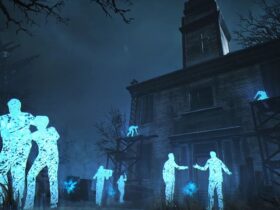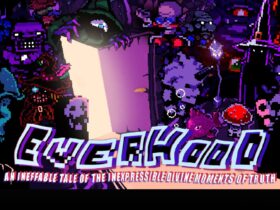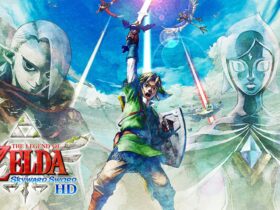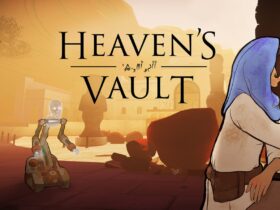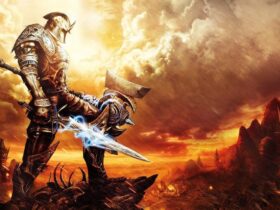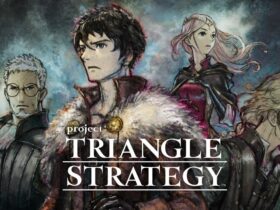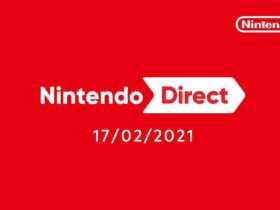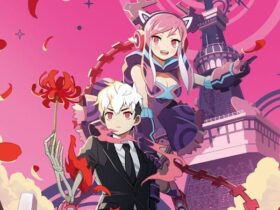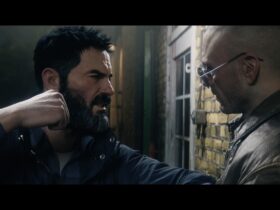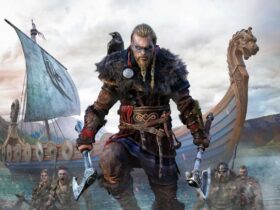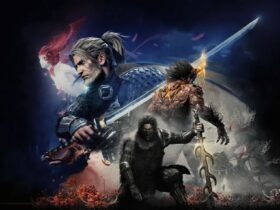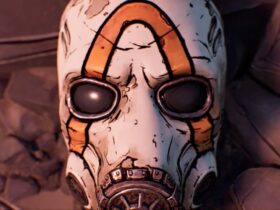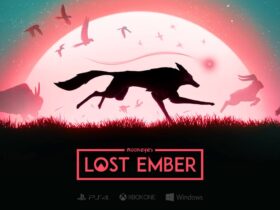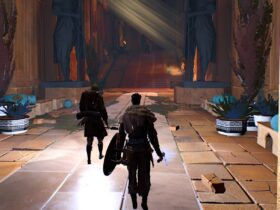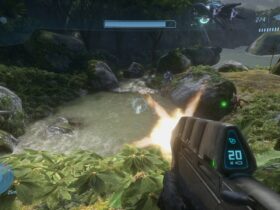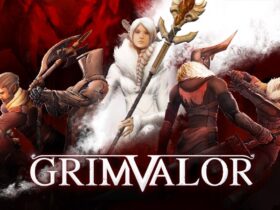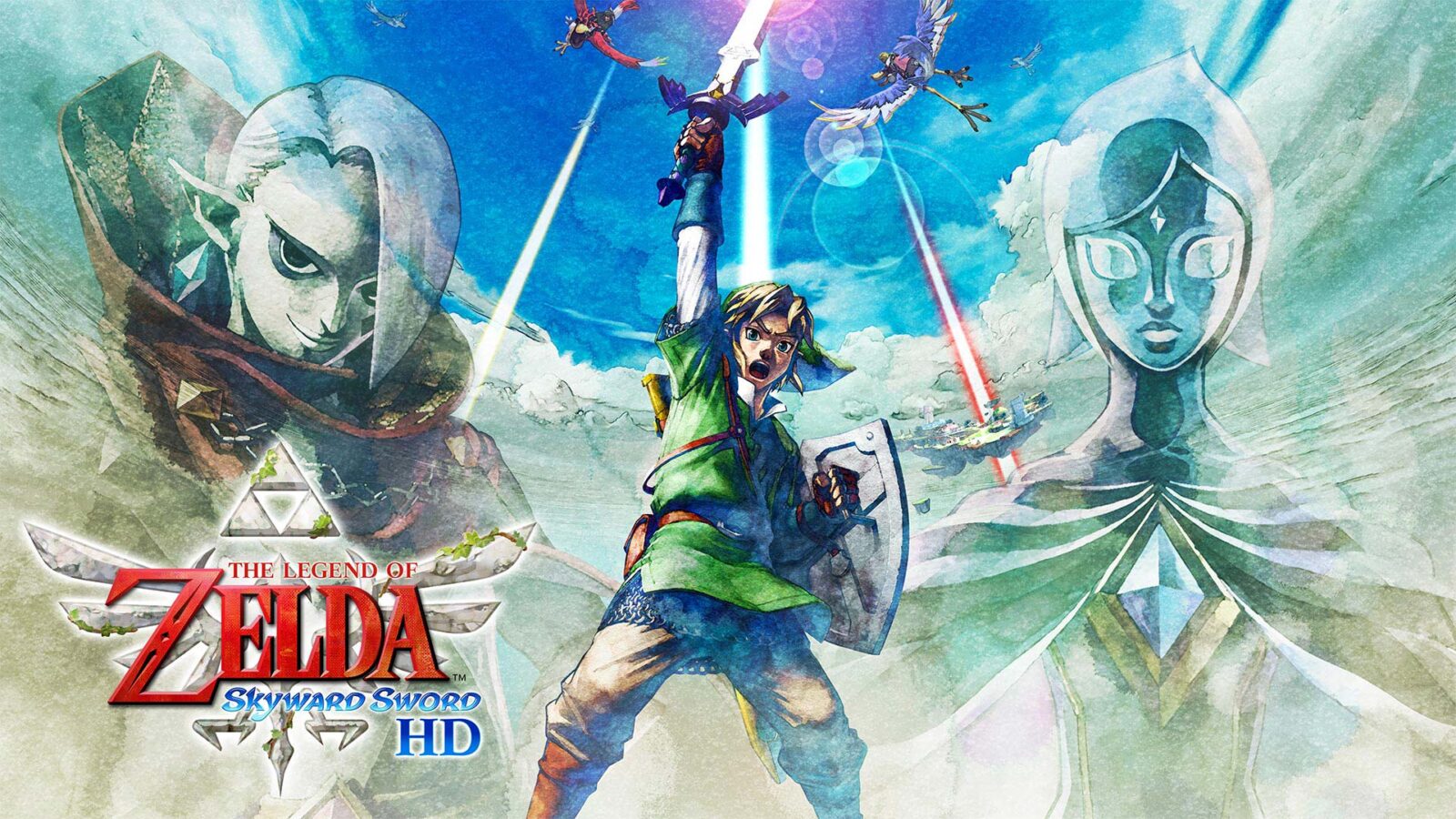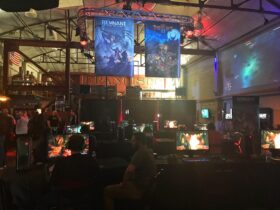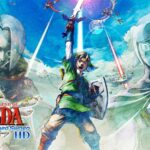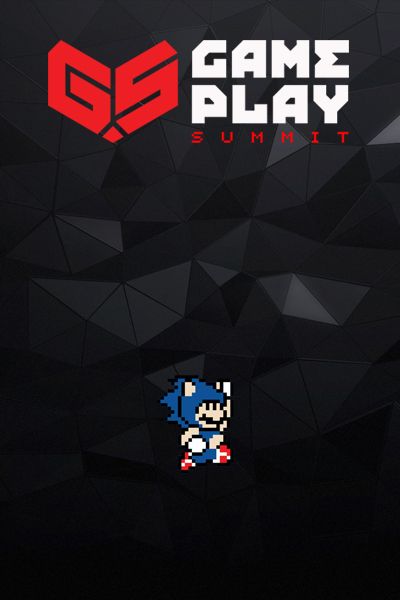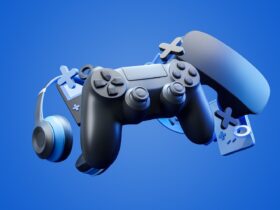Finally, the most divisive Zelda title has a chance to redeem itself.
When Nintendo announced The Legend of Zelda: Skyward Sword HD earlier this year, I was initially skeptical. This is a weird thing for me to say, because as my writing history clearly shows, I go absolutely cuckoo over anything and everything Zelda-related. But I found the announcement… underwhelming, at best. Disappointing, even.
No, not because it wasn’t Breath of the Wild 2 (we got a new trailer for that game, too), or a port of Wind Waker HD, which is my current favorite (pre-Breath of the Wild, obviously) Zelda title.
It was because, much like Skyward Sword is The Legend of Zelda‘s Origin Story™️, I also had an origin story with this game, back in the Wii era. And it wasn’t a pleasant one.
Spoiler alert: I didn’t make it very far and likely didn’t even finish the tutorial section.
It was all because of the damned motion controls. At first, hearing the words “Zelda” and “Wii” in the same sentence had me going bonkers, much in the same way that “lightsabers” and “VR” are exciting today. But as cool as the idea of controlling Link’s sword with actual swipes was, its implementation in Twilight Princess was… underwhelming.
And then, in Skyward Sword, it was downright atrocious. I couldn’t get Link to strike his sword correctly, or my Loftwing to fly instead of plunge. But there was no other way to play the game. So I hung up my Wiimote, frustrated.
Still, despite my misgivings, the Zelda nut in me couldn’t resist the HD version when it finally dropped this summer. After all, any Zelda is better than no Zelda. Furthermore, early reviews seemed to agree that the motion controls and other significant gripes had been addressed and fixed. So I plunked down the $59.99 at Target, loaded the cartridge into my Switch, and went in with as open a mind as I could muster.
After finishing the main quest (I haven’t attempted Hero Mode yet), I’ve come to the following conclusion:
This game is a masterpiece.
I’ve been seriously missing out over the last 10 years. I ought to turn in my Zelda fan card in shame; this review is my penance, how I’m atoning for my serious lapse in judgment.
It turns out that underneath all the janky motion controls, handholding, and backtracking, lays a beautiful game, with beautiful graphics, beautiful characters, a beautiful story, and a beautiful score. Skyward Sword HD is not only horribly underrated; in my view, it’s right up there with Wind Waker HD as a contender for “best 3D Zelda ever.”*
*(Besides Breath of the Wild, which is such a different beast that it’s like comparing apples and arrows)
In short, if you love The Legend of Zelda, you owe it to yourself to play Skyward Sword HD—even if you didn’t enjoy the original.
Gameplay as Precise as a Lynel Shooting an Ancient Bow
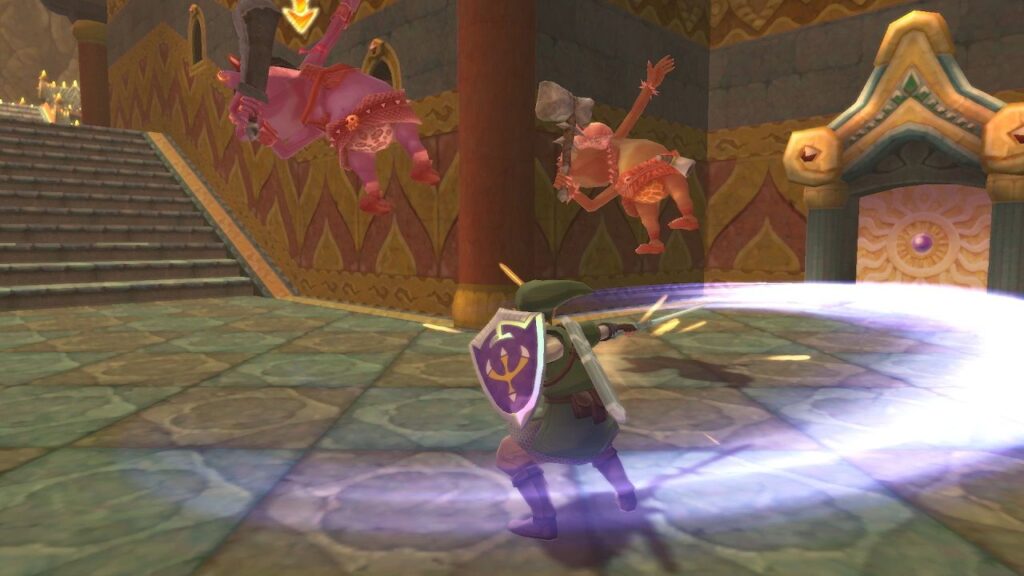
So, let’s address the Loftwing in the room first: gameplay. Looking back at the most common and repeated player complaints about Skyward Sword, they seem to come down to gameplay. I’ve already mentioned the motion controls, but even beyond that, gamers cited a lack of camera control, excessive handholding from Fi (who made Navi seem like a silent monk), too much backtracking, unskippable cutscenes and repetitive text that killed the game’s pacing, not enough locations, and too much linearity. Just for starters.
Granted, I never got far enough in the original for any of these to bug me, so I’ll admit my perspective is limited here. But in Skyward Sword HD, most of these either never came up, didn’t come up enough to irritate me.
I was never annoyed at Fi, because she never really interrupted me, except for major story beats (if anything, I wish Fi would’ve spoken more, as she’s surprisingly useless in boss battles). The free camera works seamlessly (although holding the L Button in handheld mode does take some getting used to). Players can now use multiple save slots, skip cutscenes, and speed up dialogue, which apparently wasn’t the case back then. On top of all that, the game autosaves—and rather generously as well.
Again, I never directly experienced most of the original’s annoyances. But having heard so much of them for so long, I still noticed Skyward Sword HD‘s quality-of-life changes. And I appreciated them—if they were missing from the game, especially in 2021, I’d have been peeved as well!
But the most surprising—and most significant—of these changes involved the game’s controls. They’re much more intuitive, fluid, and immersive now than they were in the original—even the motion controls!
Yes, you heard me correctly: the motion controls work. I repeat: the motion controls work! They really, truly, work!
And not just passably, either. The motion controls are so smooth, precise, and immersive that I overwhelmingly preferred them over the slightly-more-accurate button controls. Well, most of the time, anyway—I still switched to button controls for gliding and for piloting the beetle.
But that’s about it. Flying my Loftwing using motion controls was easy enough once I got the hang of it, gyro aiming was passable (but hold that thought), and having the right joystick free for the camera felt so much more natural. But the place the motion controls shine brightest, however, is combat.
Nintendo never completely abandoned motion controls even after gamers got tired of it, and motion control technology has improved since the Wii days (I suspect these two facts are related, but as of yet can’t prove it). As a result, hacking, slashing, hacking some more, thrusting, spin-attacking, and parrying via Joy-Con gestures feels millions of orders more accurate and fluid than it did on the Wii.
Having Link actually slash in the direction I swing adds a whole new dimension to even the simplest battles. They feel like proper sword fights, and engaging even a single Bokoblin feels significant—even risky (which is probably how people who actually fought with swords felt upon drawing their swords, now that I think of it!).
And boss battle are on another level altogether. At this point, wailing and flailing your Joy-Cons around hoping to score a random hit simply won’t cut it anymore (sorry). Defeating Skyward Sword HD‘s bosses requires tactical competence and utmost precision in both timing and landing your attacks. I’m going to have a hard time re-adjusting to button mashing when I sadly (but inevitably) move on to other games.
I’m sure you get it by now. But Skyward Sword HD’s controls floored me that much. My initial excitement… no, my dreams of motion-controlled Zelda swordfights have finally been realized. And remember, I’m someone who considered the motion controls a dealbreaker back in 2011!
However…!
…the motion controls aren’t perfect. Bummer, but nothing ever is.
As mentioned, I preferred gliding and beetling in button mode—gliding because I never figured out how to move my Joy-Cons correctly, and beetling because I was just lazy. Also, gyro aiming wasn’t quite as precise as the swordplay. It was a tad too sensitive, particularly with the bow—but that being said, motion-controlled archery still felt supremely badass.
I’ve also read complaints of having to re-center the gyro controls too much. I didn’t consider this much of an issue. You can re-center by pressing “Y” at any time, and being a compulsive button pusher, this quickly became second nature enough to stop noticing. Your mileage, however, may vary.
Anyway, the point remains: despite its shortcomings, Skyward Sword‘s motion controls are integral to the experience—to the degree that they’re practically inextricable from the game’s identity. And now that they work correctly in Skyward Sword HD, I highly recommend using motion controls if you’re able to. You’ll be pleasantly surprised.
I don’t want to go over every single player complaint that was or wasn’t addressed in the remaster. This review’s already long enough, both for me and for you. But I did want to touch on backtracking and linearity, two big complaints which haven’t changed from 2011 to 2021. So if either of these pain points soured your enjoyment of Skyward Sword, chances are they’ll do the same with Skyward Sword HD. However, keep in mind that this comes down more to personal preference than to questionable design choices (the latter of which Nintendo we’ve already gone through), so you may well conclude differently than me.
I’m Not Linear, YOU’RE Linear!
People who love and loathe the game can both agree that the game is, indeed, linear (the disagreement comes from whether one considers this a positive or a negative trait). So don’t come in expecting the untethered freedom and wide-open world of Breath of the Wild!
That said, I must ask: is Skyward Sword really so much more linear than other Zelda games? 3D Zelda titles, in particular, tend to be very linear.
Ocarina of Time, despite granting some flexibility to what order you can do some dungeons in, still gated off vast sections of its world until you got certain items (such as the eponymous Ocarina of Time to access the future—aka, the second half of the world—and the hookshot to get to most areas within said future). Also, there was a particular order in which you were expected to tackle dungeons (namely, the order Navi continuously nudges and pushes you into doing).
Similarly, Wind Waker is also praised for being open and free—and in the sense of being able to go just about anywhere at anytime, it was. But it too followed a set progression. Don’t believe me? Try doing Dragon Roost Cavern, the Forbidden Woods, and the Tower of the Gods—or the Earth Temple and Wind Temple—out of order, then report back to me.
Now, I want to make one thing clear: I’m not saying linearity is a bad thing! And I’m certainly not trying to knock my two favorite Zelda games of all time. I’m just pointing this out to illustrate that almost every Zelda game is linear to an extent, with only the original Legend of Zelda, A Link Between Worlds, and Breath of the Wild being completely non-linear (and no, A Link to the Past is not among them. Don’t @ me).
With this in mind, criticizing Skyward Sword for being linear is like a Chihuahua criticizing a Sheepdog for being too yappy—especially considering a big part of the game (the Song of the Hero quest) can be completed in whichever order you want. I don’t think Skyward Sword is as linear, relative to other Zelda games, as it’s made out to be. Nevertheless, the perception exists.
In any case, I generally see Skyward Sword HD‘s linearity as a pro, not a con. Especially with all the quality-of-life changes that make the remaster feel less smothering, as well as things like combat and aiming your clawshots being as fun as they are. Sometimes, it’s nice to focus on slaying Bokoblins without thinking too much about what to do next.
That said, after tasting the unfettered freedom of Breath of the Wild, I will acknowledge that Skyward Sword‘s linearity can feel restrictive. Maybe not entirely claustrophobic, but there are definitely times when the game’s “rails” are much more apparent and noticeable.
But on the other hand… Skyward Sword has dungeons! I was so happy to explore a bonafide Zelda dungeon again—and Skyward Sword has some of the series’ most deviously intricate dungeons. Hello, Sky Keep! Hello, Sandship! Hello, Ancient Cistern! How wonderful to make your acquaintance.
Sorry, Divine Beasts. You’re fun in your own ways, and you gave it your best shot, but you’re just not the same. I hope we can still be friends, but the absence of dungeons in your game is starting to really bother me.
Anyway. Moving on!
It’s a Small World Afte—– [~PLEASE SCAN AMIIBO TO KEEP READING~]
When it comes to backtracking in Skyward Sword, this complaint comes in two flavors: 1) returning to the same places for story reasons, and 2) shuffling back and forth across locations for completionist reasons. I’ll examine both.
The first complaint basically comes down to, “the world isn’t big enough.” Instead of having the story unfold across a huge, wide world with tons of places to explore, the game makes you visit each of its three main regions three times each. I personally didn’t have a problem with revisiting areas, as I still explored new areas within a region. Or revisited a site that had changed so much (by flooding or volcanic eruption, for example) that it might as well had been a new place.
But again, this is subjective and comes down to personal preference. I certainly understand wanting a wide range of environments, as location diversity remains among my favorite aspects of both Ocarina of Time and Breath of the Wild.
The second complaint, which involves backtracking, shouldn’t even be an issue, as Nintendo did implement a fast travel mechanic to alleviate this issue… but then they gated it behind their brand-new, impossible-to-find Loftwing amiibo. Which instantly sold out and still can’t be found at a reasonable price. So if you’re a completionist who isn’t able to plunk down an extra $50-60–whether out of principle, because you can’t afford it on the secondhand market, or because you can’t even find the damned thing—then this is going to significantly annoy you.
Granted, backtracking without fast travel wasn’t as big of an issue as, say, the motion controls were. Although there were instances where I really felt fast travel would’ve helped greatly, I got over it pretty fast (in this way, Skyward Sword’s smaller world is arguably an advantage, as there’s not as much surface area to backtrack in).
Still, the fact that this significant quality-of-life improvement is only available to a lucky, select few… well, it’s a very shady move by Nintendo. It’s highly concerning to see the company, which practically made my childhood, increasingly adopt this and other anti-consumer tactics—like borderline-predatory monetization strategies for its mobile titles. Sure, it’s highly profitable. But at what cost?
This fact alone will be a dealbreaker for many, and understandably so. And that’s sad because more people—who would’ve otherwise experienced one of the Zelda series’ most delightful and unique entries—won’t get to play it. And any person unnecessarily missing out on this game is a tragedy. This, more than anything, is what’s holding back Skyward Sword HD’s gameplay from a perfect score.
But if you’re lucky enough to gain access to fast travel, this won’t be an issue. And if you can live without it, the rest of the game will more than make up for the inconvenience—and in my experience, backtracking was a relatively minor inconvenience anyway.
Either way, don’t despair. Did you know the timeshift stone mechanic is ingenious, brilliantly executed, and tons of fun to play with? So if nothing else, you can hype yourself to look forward to that while you’re listlessly drifting across the sky from Faron to Eldin to catch dung beetles (again).
Graphics: The High-Water(color) Mark
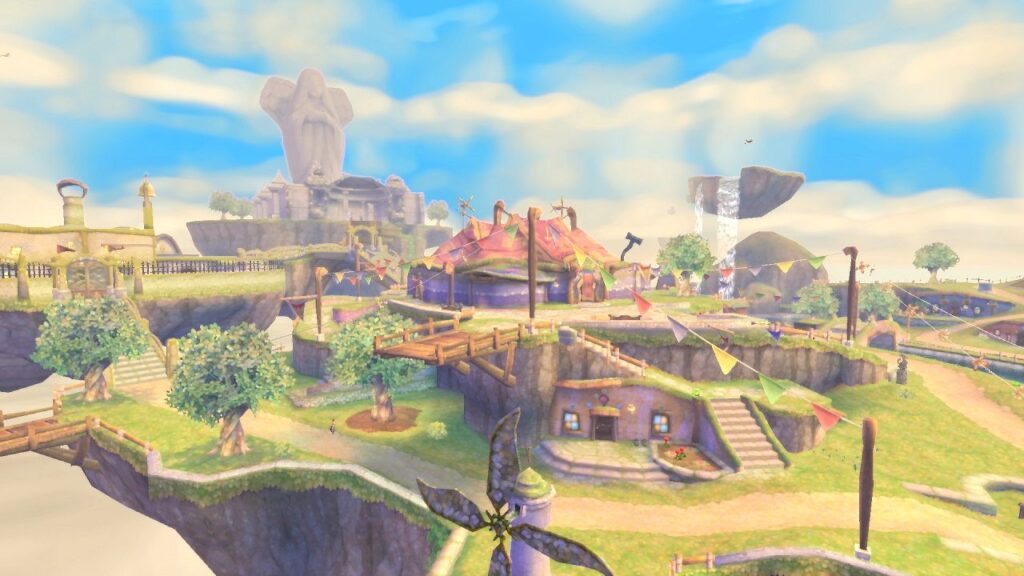
Another thing that Skyward Sword‘s detractors and defenders can both agree on: the game is gorgeous. Period. The game has a distinctly bright, airy, and pastel-like art style that resembles a watercolor painting. It’s unclear to what extent this was by necessity, but regardless of why, I’m glad Eiji Aonuma and the Zelda team committed to this aesthetic. I always loved Skyward Sword‘s graphics. Even though I was one of the original’s many detractors, I was nevertheless awed by its artsy look, which reminded me of my dear favorite Wind Waker‘s cel-shaded lightheartedness.
Funnily enough, after Skyward Sword HD‘s reveal, I remember expressing a concern which should’ve gotten my gamer card revoked: that the graphics would be too good, compromising the original’s signature, watercolor-ey look. Fortunately, this turned out to not be the case: the remaster retains the paint-brushed aesthetic while adding satisfyingly crisp and detailed HD textures.
As such, Skyward Sword HD is just as stunning as its forebear was—but at the same time, it’s even more stunning than ever. I know that sounds ridiculous, but it makes perfect sense when you see it. This is a beautiful game, a visual delight from start to finish.
Oh, and the silver rupee on top? The game runs at a silky-smooth 60 FPS. Yes, a Zelda game that runs at 60 FPS. Hacking and slashing Bokoblins never looked so smooth and fluid, and only added to the immersion and sense that I was right there with Link, hacking and slashing and parrying with him.
A Game That Sounds Divine
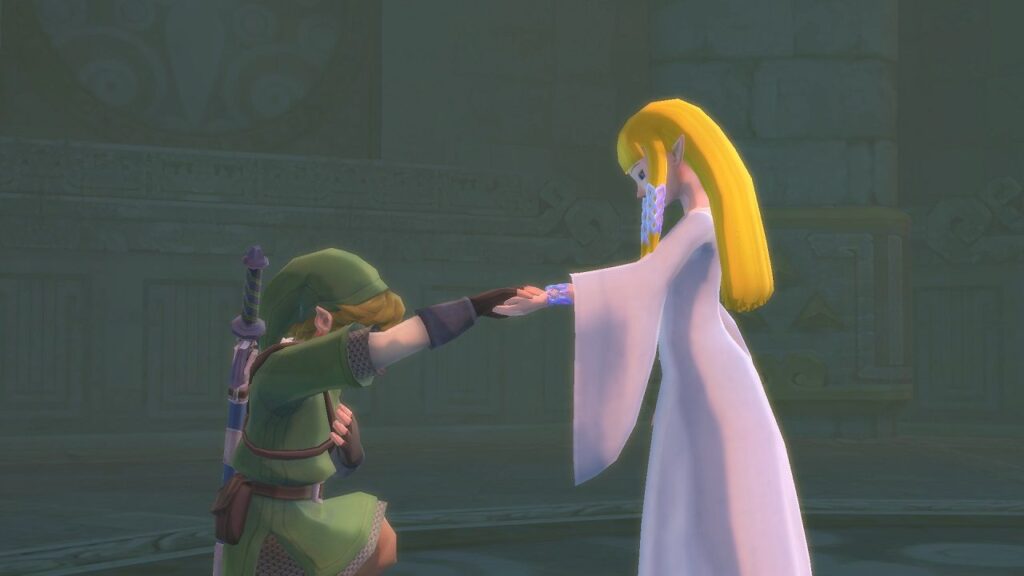
So now we come to sound. In a Zelda review. This franchise gave us some of gaming’s most iconic and enduring music, and this entry was meant to be the series’ high point. How good do you think Skyward Sword’s sound is?
Since the franchise’s inception, gamers (and, increasingly, mainstream critics) have lauded The Legend of Zelda for its music. Even non-gamers recognize some of the series’ more iconic tracks. You know which ones. So it comes as no surprise that Skyward Sword continued the Zelda tradition of musical excellence.
Under the inimitable maestro Koji Kondo’s stewardship, Zelda games have seamlessly blended countless musical styles—from Gregorian chants and medieval troubadours to boleros and waltzes—to create beautiful compositions that run the gamut from bombastic and epic to placid and poignant. And Kondo was doing this long before anyone else envisioned the fully orchestrated, cinematic scores that grace today’s games.
The Zelda series also codified and perfected the leitmotif: music strongly associated with particular characters, places, or events. Kind of like theme songs, but that’s a slight oversimplification. Hey, remember Zelda’s Lullaby? The Overworld Theme? Ganondorf’s Theme? Well, those are all leitmotifs for Zelda, Link, and Ganon/dorf, respectively. How about those jingles when you open treasure chests, solve a puzzle, or complete a heart container? Hard to imagine hearing that in any other series, isn’t it? Well, it’s the same deal.
There’s more to it than all this, but diving into it is way beyond this review’s scope. But however the magic makes its music, the end result is a decades-long musical canon that’s arguably the best in all of gaming. And the one thread that ties each note together is that it’s all uniquely, and unmistakably, Zelda music.
Hear for yourself. Go ahead and listen to the Title Themes, Song of Storms, Mabe Village, Revali’s Theme, Gerudo Valley, Link’s House, and Lon Lon Ranch Theme, then come back here. Now, could you ever imagine these songs in a non-Zelda game? You can’t, right? Even if you can’t articulate why, you just know they share tons of musical DNA.
Skyward Sword was the last Zelda game before Breath of the Wild hit the reset button on several of the series conventions, musical tropes included. As such, it is the last mainline, console-based Zelda game (not counting remasters) to fully lean into its musical pedigree.
And while I understand why Breath of the Wild‘s composers went in the direction they did. Still, keep in mind I’m someone who really loves Zelda music. I still fondly hum along to memories of first hearing Ocarina of Time‘s still-unmatched score. The Symphony of the Goddesses moved me to literal tears. I gladly import Japanese releases of Zelda soundtracks for which shipping costs more than the album itself (which is still expensive in its own right).
And so I must admit that, as much as I love Breath of the Wild, I wish it had more music. Specifically, more Zelda music.
Fortunately, Skyward Sword HD—like the original—has the rousing, moving, catchy, and awe-inspiring soundtrack that befits a Zelda game.
Fun fact: Skyward Sword was the first Zelda game with a fully orchestrated score. Ever since Ocarina of Time, the series’ first 3D entry, Zelda’s music had an unmistakably orchestral quality to it. But the N64’s tinny sound card couldn’t output sound of truly orchestral quality* (thankfully, the several official and unofficial touring Zelda symphonies have stepped up to bridge that gap). It wasn’t until Skyward Sword, the series’ last “traditional” 3D title, that the reality caught up to Kondo’s vision.
As such, every single crescendo, cello, flute, chant, drum, and pluck of the Sacred Harp in Skyward Sword HD sounds gloriously crisp, clean, and clearer than ever.
Hearing Zelda music throughout my entire playthrough was more refreshing than a bottle of Chateau Romani at the Dawn of a New Day. It made me realize just how much I missed that musical joy in Breath of the Wild. It’s clear to me, now more than ever, how integral Zelda music is to the series. And I hope that Breath of the Wild 2 makes more use of it.
Anyway.
Skyward Sword‘s music is unmistakably Zelda music. That said, while it’s got the stunning score covered, it’s somewhat sparing and subtle in its use of leitmotifs. But it does play with them in clever ways that sound just as great.
The Ballad of the Goddess, for instance, is actually Zelda’s Lullaby played backward. And like its inverted counterpart, the Ballad is beautiful, moving, and quintessentially Zelda music. It’s arguably the entire game’s standout track, and a natural inductee into the The Legend of Zelda’s musical hall of fame.
So, Enough About Music. What About Sound Effects?
Believe it or not, sound effects are trickier to pull off than they first appear. When done well, you don’t notice them—because their whole point is to blend in, to make things sound as they would in real life. But when done poorly or not at all, their absence becomes glaringly conspicuous, pulling you out of immersion, out of the story, and out of the experience. They’re very important!
Fortunately, the Zelda team’s commitment to auditory excellence also extends to this area. Zelda’s sound effects are as iconic as its music. Bombs being lit and going off, swords hitting different shields, Beedle’s greetings and gratitudes, hearts refilling, swords cutting grass, jars breaking, and Link’s full repertoire of grunts and shouts are all as integral to the series as its masterful soundtracks.
Zelda’s sound effects have also remained remarkably consistent throughout the decades. But they have also benefited from great advances in audio technology. So, like the music, these iconic sound effects sound better than ever in Skyward Sword HD.
So, to wrap up: Skyward Sword HD has one of the best scores in a Zelda game, possibly the last Zelda score of its kind, and few video game soundtracks have sounded better or crisper. The Symphony of the Goddesses may not be touring, but playing through Skyward Sword HD is the next best way to experience The Legend of Zelda’s legendary and magical music.
Oh, and Skyward Sword HD has surround sound. Like, actual surround sound, with rear channels. ‘Nuff said.
The Legend of the Legend
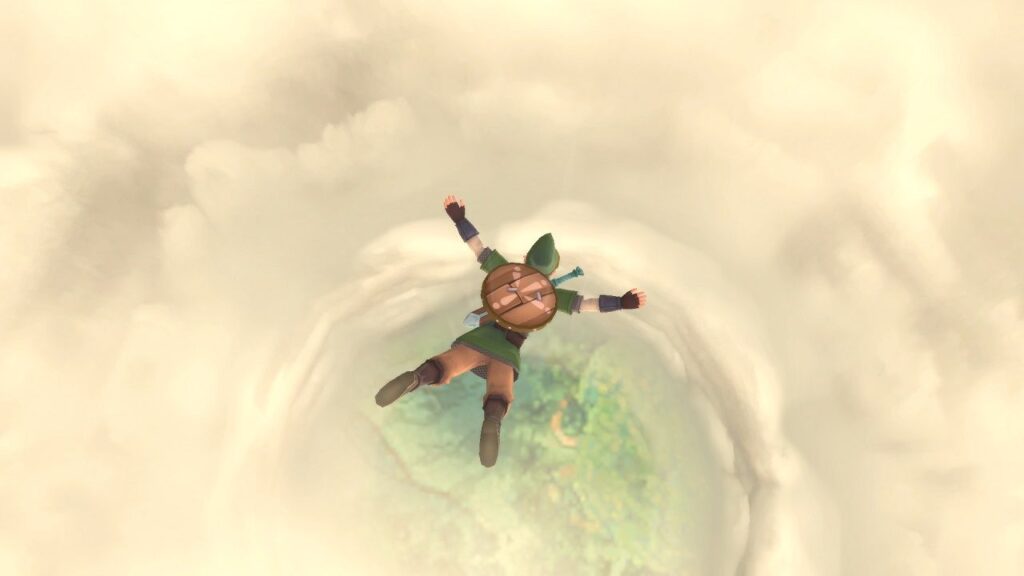
Despite the medium’s astronomical potential for storytelling, video games are notorious for failing to live up to it. But The Legend of Zelda‘s a jumble of narrative paradoxes which occupy an interesting space in gaming’s still nascent transformation into a viable storytelling vehicle.
What do I mean by “paradoxes”? Well, Zelda games are often criticized for telling “basic” stories with “basic” characters that act out “basic” and predictable plots. But at the same time, the series has a deep, rich, and enthralling lore that’s known for being fascinating and convoluted, often in equal measure.
And it is precisely those traits that endear The Legend of Zelda to legions of passionate fans. Zelda lore is unequaled in their eyes. In microscopic levels of detail, they endlessly and obsessively pore over it on fan forums, subreddits, and Discord servers worldwide.
So, the series is blasted for having too much story… yet also for having no story. Sometimes in the same breath. That is a paradox.
It may come as no surprise that I disagree with both of these criticisms. After all, would The Legend of Zelda have captivated the hearts of so many players, for such a long time, if its story didn’t resonate with them? After speaking with so many people who’ve felt deeply moved by these stories, on a profoundly personal level, I highly doubt it.
Yes, stories in Zelda games tend to be “basic.” But hear me out: this is NOT an inherently negative thing! Your typical Zelda story tends to be a standard, paint-by-numbers, hero’s journey monomyth dressed in fantasy tropes, which is acted out by familiar, archetypal characters in a varying range of archetypal locations. Does that sound negative? It isn’t. Do you know what other stories fit that description? The Lord of the Rings, Harry Potter, and Star Wars, among countless others. Including… erm… hold on… *checks notes*… oh yeah. The Legend of Zelda.
This type of story structure resonates with people because it is universally relatable. It’s been recorded in every known culture, in every era of written history (and likely long before that). On a deep, even primal level, it speaks to us—almost like we are hard-wired to tell and listen to this type of story.
But even if individual Zelda games’ stories are too “basic” for some players’ liking (which, being subjective, is a valid opinion), we’re still left with the lore, which—having been somewhat haphazardly expanded on by each game in the franchise’s 35-year history—is positively Byzantine. It’s arguably too convoluted by anyone’s standards, and learning it can undoubtedly be a daunting and intimidating task for newcomers.
But for those brave souls who stick around long enough to turn into diehard fans, the lore eventually starts to click. And once it does, analyzing and arguing about the lore becomes almost as fun as actually playing the games. Zelda’s lore makes the whole Zelda universe feel more fully fleshed out and much more alive than it appears from just one game.
Which brings me to Skyward Sword.
According to the lore, Skyward Sword takes place before the events of every other Zelda game. This makes it an origin story (or “prequel”) of sorts for the franchise. It takes place long before Hyrule was called Hyrule, before Ganon first cast his long shadow over the realm, when Death Mountain was but a wee lad of a volcano. You know, really long ago.
As such, playing through Skyward Sword is critical to fully understanding the series’ lore and why the timeline unfolded the way it did.
Being such a diehard, I’d read up on Skyward Sword‘s story even though I’d put down the game. I knew, intellectually, about Skyloft, Hylia, Ghirahim, Demise, Faron, Eldin, and Lanayru. But now, after experiencing Skyward Sword HD and its story firsthand, I intuitively understand the game’s place in the timeline, much like one better understands cooking by actually doing it instead of just reading a cookbook.
I also connected so many dots between Skyward Sword and the rest of the series which I might otherwise never have. And not just in terms of the main plot (which I won’t spoil for you), but also in several little details.
Like seeing the ubiquitous Goddess Crest, which later becomes the equally ubiquitous Royal Crest. Or the Great Tree, destined to become the Great Deku Tree eons later. Or what’s basically the Master Sword’s beta version (complete with its own Siri / Alexa!). Along with many, many more allusions to future timelines, just waiting for fans to spot and recognize in delight.
(Not that you need to be a fan or have played other Zelda games to enjoy Skyward Sword or follow its story. On the contrary! Zelda games, while interconnected, are mostly self-contained experiences and easily accessible by newcomers and veterans alike)
Oh, and it was pretty neat to see so many staples from Breath of the Wild first being implemented in Skyward Sword. Among them: climbing, parachuting, the stamina wheel, ancient tech, and collecting bugs, rocks, and monster parts for upgrading your gear. In a not-insignificant way, we have Skyward Sword to thank for how Breath of the Wild turned out (and not just because of the player backlash).
Characters You Can Link To Yourself
Anyway, let’s talk about characters now: starting with Link, by now the OG player-insert.
One thing I always did appreciate about Skyward Sword was how much more expressive the characters’ faces are, especially Link’s. Now, with Link more than perhaps any other character, this is a somewhat risky proposition. Link was always meant to be a blank slate onto which the players could project themselves. So making him too expressive (thus giving him too much personality) could compromise this aspect.
I somewhat disagree with the degree to which Nintendo has upheld this, however. Having Link express emotion doesn’t suddenly make him any less universally relatable. If anything, it makes him more believable and therefore easier to connect with. After all, everyone feels happy, sad, or angry at some point in their lives.
In fact, this Link and Toon Link are my two favorite Links because they’re so much more expressive. Seeing Link feel happy at finding treasure, relieved when seeing Zelda, frustrated at his own shortcomings, and angry at Ghirahim made me feel those emotions along with him (thanks, mirror neurons!). They also made Link feel more real.
Same goes for the equally expressive NPCs. I considered their expressions endearing. They made me more attuned and empathetic to their troubles.
All in all, the characters’ increased expressiveness—in both major actors and non-player characters (NPCs) alike—made me enjoy the story much more, because they felt more alive and believable as characters. Which made them easier to connect with me, which then made me more invested in the story. As a bonus, the ending felt like it paid off much better because of this, and not just by the standards of Nintendo’s consistently atrocious endings.
Oh, While We’re Talking About NPCs…
Zelda NPCs are often dismissed as sparse and unmemorable. I disagree with this assertion. Remember that Impa, the Happy Mask Salesman, Tingle, Linebeck, Beedle, and even Zelda are all NPCs. Sure, not ALL of the NPCs are memorable… but when is this ever the case? In what game (never mind franchise) is every single NPC fully fleshed out? Again, a bit of an unfair comparison.
That said, Skyward Sword‘s NPCs are a little low in numbers, but the characters that do appear more than make up for it in charm. Not the least of whom is Zelda. Her always-implied-but-never-stated romantic tension with Link is much more evident here than in any other entry. But far from being cheesy, it feels genuinely tender, tragic, and authentic. It also imbues Link with greater motivation go to on his quest, beyond just “it’s your destiny as the Hero.”
As for other NPCs, indeed, they’re not super fleshed out, but they all have distinct personalities and are each charming in their own unique ways. My favorites include Scrapper, Plats the Mogma, the Hand in the Toilet, and fan-favorite Groose. And the most complained-about NPC—Fi, Link’s incessantly nagging fairy companion—has been muzzled in Skyward Sword HD.
Oh, and the villains are on top of their game here. Skyward Sword‘s villains are tenacious, full of moxie, and terrifying, sometimes in equal measure. Ghirahim’s combination of charm, faux congeniality, and sheer viciousness makes him a highly compelling villain. Demise is imposing, intimidating, and just plain evil. He is also instantly familiar to longtime fans, despite his first (and so far, only) appearance. The hordes of Bokoblins and other mooks you’re constantly mowing down with your sword are just as funny and oddly cute as ever.
The only exception is this one tedious boss you have to fight three times (you’ll know which one). Otherwise, Skyward Sword HD‘s villains—from first Bokoblin to final boss—feel genuinely threatening, from gameplay and narrative perspectives. This is a prime example of gameplay and narrative enhancing each other. Because the game’s combat is so much more intentional, every battle and victory feels significant, which immerses you further into the story and the world. Then the stakes feel slightly higher during the next battle. And so on, and so forth, until you finish the game.
But let’s back up a bit and talk about narrative. Yes, Skyward Sword HD has a standard Zelda plot centered around retrieving a procession of useful items and sacred relics to save the princess and defeat the evil power. Just like all the 3D Zeldas that preceded it (again, don’t come in expecting Breath of the Wild).
But Skyward Sword HD‘s main conflict brings huge stakes to the table, highly expressive characters sell it more convincingly, and endless references to the lore provide that sweet, sweet dopamine boost that keeps you playing. I felt invested in Skyward Sword HD‘s story to a much greater degree than most other games, and even many Zelda games. And in the end, I also found the ending so satisfying that I actually clapped during the end credits (yes, I was alone at the time).
Astute readers may have noticed we’re near the end of the review, and I haven’t mentioned the setting yet. So let’s do that.
So, IS It a Small World After All?
Once again, we’ve got conflicting verdicts here as well.
Fans generally agree that Skyward Sword‘s Hyrule (even though it wasn’t called Hyrule yet, that’s what I will call it for the sake of consistency) is beautiful and vibrant. And it is! It’s bright, colorful, pristine, and mysterious—perfectly matching the game’s story and tone. The art style (which I’ve gone over above) comes alive on Hyrule’s many stunning landscapes, whether it’s a forest, volcano, desert, or pastoral cloud city. It’s a stunningly beautiful world that’s delightful to explore, and since getting lost happens much less (thanks, linearity!), exploring it is significantly less frustrating.
At the same time, the setting’s not perfect, either.
A common complaint lodged against Skyward Sword concerns the hub world of Skyloft; specifically, for being too empty. I think there’s something to this critique. But I do want to make clear, for the record, that I believe Skyloft itself is robust and dense enough to feel like a vibrant central hub town, akin to Majora’s Mask‘s Clock Town.
However, the sky around Skyloft, dotted by small sky islands, does feel comparatively barren. This makes traversing the sky to get to other regions a tedious and even dull chore. And there’s no other way to get to another place—it’s no way or the skyway.
Not that this is unique to Skyward Sword; I found Wind Waker‘s fondly-remembered Great Ocean to be equally empty and tiresome to cross. While not as empty as the sea or the sky, Twilight Princess‘ overworld nevertheless felt relatively lifeless for its size. Some even consider Breath of the Wild’s Hyrule to be too empty, though I can’t say I agree with them. Devoid of towns and villages, sure… but Breath of the Wild packed its world with landmarks, wildlife, loot, baddies, and Koroks.
Nevertheless, Skyward Sword HD‘s empty… um, sky (sorry) does feel like a missed opportunity. But while unfortunate, it’s far from a dealbreaker for me.
WARNING: Mild Spoilers Ahead!
Other players lament Skyward Sword HD‘s scarcity of locations: only three surface regions, connected via an empty hub in the sky. All of which you visit over and over again.
I’ve already addressed this from a gameplay perspective, but I’d like to talk about it from a story perspective. Now, it’s true that other Zelda games take place across a more extensive range of different regions, biomes, and climates. But Skyward Sword‘s location frugality actually suits its story quite well.
For starters, the game takes place a very long time ago, before the Kingdom of Hyrule. Hylians had lived in the sky for so long that the surface’s very existence had faded into legend. Link broke the cloud barrier and became the first Hylian to walk the surface for several thousand years. It makes sense that that, in this newly-discovered terra incognita, there’s not a lot of charted land to venture in.
But all that aside, the story beats that lead you to revisit these areas—despite essentially being McGuffin collectathons—are narratively sound and don’t disrupt the story’s pacing or flow.
As mentioned before, every time you return to a region, you either explore a new area within it or a previously visited area that has changed drastically. In both cases, these revisits add to the story as much as they add to the gameplay. They’re narratively consistent, serve to advance the plot, and fill you in on new lore.
And even though they aren’t technically “new” places, they certainly feel “new” in their own way, preserving the sense of exploration and excitement on return visits. Besides, these sequences are just so much fun to play—hell, there’s even a stealth section that I thoroughly enjoyed, and I loathe stealth sections in games!
SPOILER ZONE ENDS HERE. Thank You for Reading!
Hey, what’s that word I just mentioned? Fun? Ok, let’s talk about that now. But before we do, let me summarize my thoughts on Skyward Sword HD‘s story:
Yes, the story is “basic.” Yes, the story is fun. No, those statements are not mutually exclusive. But most importantly: Skyward Sword HD is a quintessentially Zelda story, polished up to the nines, featuring well-rounded characters, and set in a world that feels more vibrant and alive than ever before.
Everything is Connected (To Lots of FUN!)
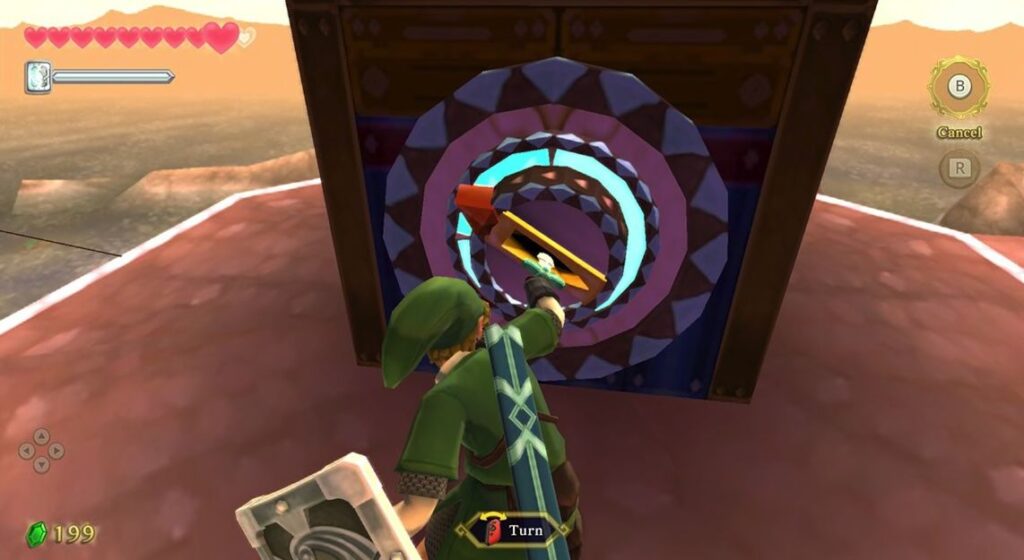
Ah, looky here, there’s another word to analyze: “alive.” I’ve mentioned it a few times in this review. So, what do I mean by that?
Like every great Zelda game, Skyward Sword HD is a whole that’s greater than the sum of its parts. Take its linearity, for example. In a vacuum, it seems like a major demerit. But the complete experience of Skyward Sword HD—its gameplay, art style, score, and story—more than makes up for it.
This is because all these elements combine to make Skyward Sword HD‘s people, places, and events feel more dynamic, and more vibrant. As mentioned above, its world feels like a living world. And in a series where exploration is one of its biggest draws, this is critically important. Static, sterile, and lifeless worlds are not fun to explore.
Fortunately, Skyward Sword HD is tons of fun to explore! Both in terms of exploring the game as a whole and exploring its individual components like world and story.
However, while Nintendo has patched up many of Skyward Sword‘s most glaring flaws, Skyward Sword HD still has weak spots. Some of which are pretty consequential.
The game’s (slightly) more linear nature will doubtlessly continue to fuel contention amongst fans. Some will also consider the characters and locations lacking. And Nintendo’s unprecedented act of gating fast travel behind an impossible-to-find amiibo is a slap in the face to all the players who missed out (i.e., most of them).
However, most of these weak spots (except for the amiibo gatekeeping) boil down to personal preference instead of poor design choices. Skyward Sword HD is an objectively well-made game. But, like its standard-definition predecessor, it will not appeal to everyone.
Nevertheless, I do encourage everyone to give it a chance. This includes those, like me, who’d be giving it a second chance. If you do so, I advise you to go in with an open mind, recalibrate your expectations (i.e., this is not Breath of the Wild), and clear your head of preconceived notions from prior reviews or passionate Reddit rants. The game could very pleasantly surprise you.
Skyward Sword HD delivers a beautiful, moving, immersive, and genuinely fun experience from start to finish. This game is the essence of The Legend of Zelda in its purest, most distilled form. And now gamers can play Skyward Sword the way it was meant to be played. Zelda fans, both old and new, will find plenty to love about it. Let it work its magic on you.
As I mentioned in the introduction, I wasn’t exactly jumping for joy when Nintendo announced Skyward Sword HD. But I gave it a shot, and for my troubles, I got a brand new, full-length Zelda experience when I wasn’t expecting one. Few things bring me as much joy as playing a new Zelda game. And by surprise, on top of that? That’s 65 hours of pure, unexpected bliss.
And I haven’t even started Hero Mode or trying to 100% it. After a short break, I will return to Skyloft. And not for the last time, that’s for sure.
Final Thoughts
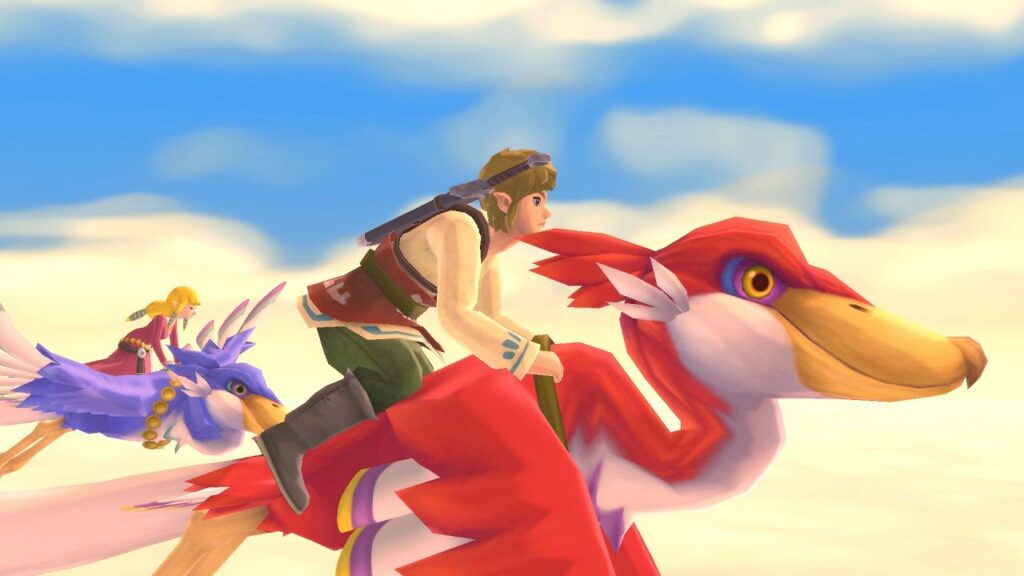
What a difference 10 years and two console generations make. In 2011, I joined the chorus of fans poo-poo’ing Skyward Sword for its long list of grievous faults. In 2021, I not only appreciate Skyward Sword HD—I consider it one of the best Zelda games ever made.
Seriously. To me, it’s right up there with Ocarina of Time, Breath of the Wild, and Wind Waker. And I’m far from the only one who’s adjusted their tune.
So, what changed? Skyward Sword was so well-received at first; why did fans sour on it so much, and why were we so quick to change our verdicts for Skyward Sword HD?
Nostalgia could be part of it. Maybe after Breath of the Wild‘s multitude of changes and total freedom, fans got nostalgic for the simpler times of “traditional” 3D Zeldas. They missed exploring dungeons, shooting hookshots, finding Rupees in grass and jars, and having weapons that didn’t break. Perhaps they wanted another taste of the “Zelda on rails” games of the olden days.
But that can’t be all, or even most of it. After all, players whose first (and even only) Zelda game was Breath of the Wild are playing Skyward Sword HD, and they’re loving it just as much. At the same time, many longtime fans who weren’t on board in 2011 were not swayed in 2021, and so remain detractors.
Could it be the quality-of-life changes? Perhaps. After all, The Legend of Zelda is known for many things, but ‘making bad games’ is not among them. With the biggest issues fixed in Skyward Sword HD, many of us are realizing that Skyward Sword wasn’t a bad game.
My own take? By making use of both the Switch’s better hardware and vocal player feedback over the past decade, Nintendo was finally able to release the game it had always meant to. Or rather, Skyward Sword HD could belatedly let players play the game as it was always meant to be played.
Consider the much-maligned motion controls. They were terrible on the Wii, to the point where I, a diehard Zelda fan, gave up playing a Zelda game out of frustration. Do you know what a shameful achievement that is? To get me, of all people, to drop a Zelda game?!
But in Skyward Sword HD, the motion controls work as they should. They work so well that playing without them feels weird. This tells me the motion controls weren’t a ‘gimmick’ forced on players, as players and critics often charged (and still do). Instead, they really are so integral to the game that it feels incomplete without them. Motion controls practically define the game. And the game is a masterpiece!
I’m increasingly convinced that the limited technology and gaming zeitgeist in 2011 severely held the game back from reaching its full potential. At the time, players and critics derided Skyward Sword for its reliance on ‘gimmicky’ motion controls. You know, the same motion controls that make Skyward Sword HD so much fun.
So maybe the motion controls weren’t the problem at all. Perhaps, as is so often the case, Nintendo was simply ahead of its time.
But regardless of the past, the present is clear: Nintendo has fixed Skyward Sword‘s most significant issues. As such, The Legend of Zelda‘s origin story has a fortuitous, if precarious, chance to redeem itself with the greater Zelda fandom.
Hopefully, as more people play, more people will start to appreciate Skyward Sword HD. And if enough people do so, then The Legend of Zelda‘s most underrated and unfairly maligned chapter can finally take its rightful place as a beloved—not derided—entry in the Legendary franchise’s canon.
My final verdict:
Everyone who has ever enjoyed a Zelda game—even just Breath of the Wild—needs to play Skyward Sword HD.
This game was reviewed using the author’s own purchased copy.
[penci_review]

